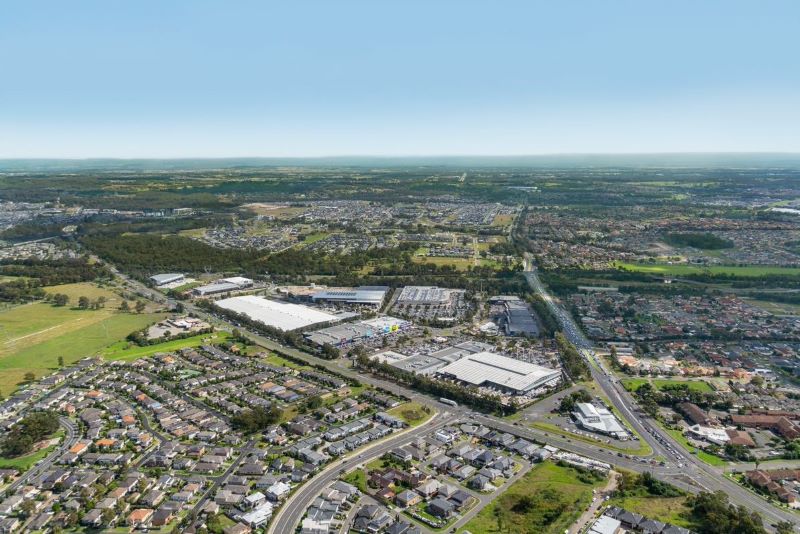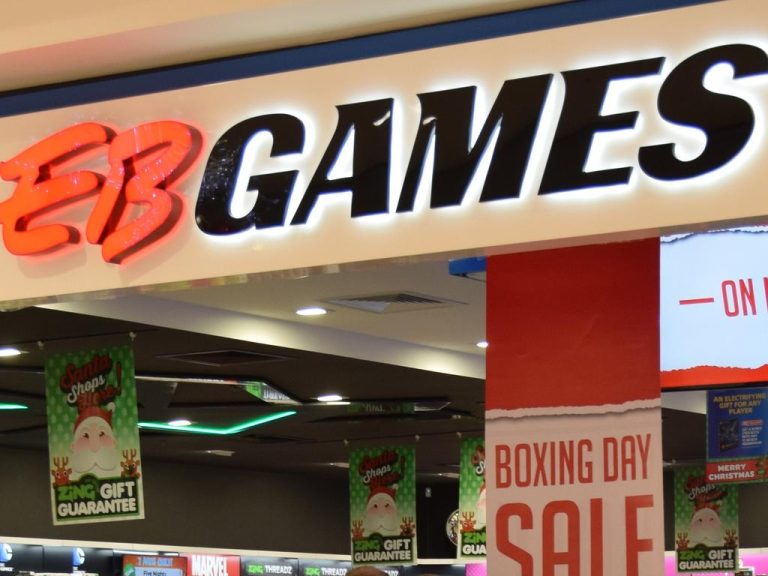One of Australia’s largest homemaker centres is up for sale

One of Australia’s biggest homemaker centres is up for sale, with its huge landholding and future as both a retail and industrial hub expected to be a strong drawcard.
Commercial property investment group AsheMorgan is selling the Crossroads Centre in Casula in south-west Sydney, three years after acquiring the 14.3ha site for $140 million.
With large format retail performing strongly during the pandemic and record demand for industrial and logistics space, the homemaker centre itself and the size of the landholding are expected to attract strong interest.
The centre has a gross lettable area [GLA] of 52,138sqm and is positioned on a 143,520sqm site over four separate titles.

The Crossroads Centre in Casula is one of Australia’s biggest homemaker centres. Picture: Supplied by JLL
The LFR hub is fully leased to 38 tenants including national brands Bunnings, Freedom, Officeworks, Fantastic Furniture, Planet Fitness and Nick Scali.
JLL’s retail investments team of Sam Hatcher and Nick Willis along with Stonebridge’s Philip Gartland, Carl Molony and Jonathan Fox are conducting the international expressions of interest campaign.
Mr Hatcher said Crossroads sits within the top five LFR assets nationally for total GLA and is backed by a heavyweight tenant mix, with almost all its gross income anchored by national and chain retailers.

Bunnings is one of the national tenants at the Crossroads Centre. Picture: realcommercial.com.au/leased
Mr Willis said Crossroads could potentially be a future hub for retail, logistics, office and accommodation uses.
“The size of the significant landholding drives the investment underwrite, with a scarcity of land across the Sydney metropolitan area being a major contributor to total investment returns,” he said.
“The rarity of Crossroads’ landholding is further bolstered by its ability to be utilised for an array of industrial uses subject to approvals.”
The agents said the B5 zoning provided an array of additional permitted uses, subject to council approval, including light industries, warehouse and distribution, storage premises, offices, hotel and motel accommodation and medical centres.
“Retail and industrial property are becoming increasingly interlinked with demand for high quality, strategically-linked landholdings that can accommodate this growing trend continuing to rise,” Mr Molony said.
The Crossroads Centre was built in 2000 and a $3 million food and beverage precinct was added recently.

Crossroads is one of Australia’s five biggest large format retail assets. Picture: realcommercial.com.au/leased
There are only five other LFR centres in Australia under a single ownership with a GLA exceeding 50,000sqm.
Mr Willis said the scale of Crossroads is rarely replicated or traded within Australia.
“On record, Crossroads is the largest land parcel in the LFR sub-sector to have traded and the second largest by total GLA. Since January 2010, only four LFR centres above $150 million have sold.”
Large format retail a strong performer during COVID
The LFR sector has performed strongly during the pandemic, as the home improvement trend and strong renovation activity during the housing boom drove up demand for household goods like hardware, furniture and electronics.
PropTrack economist Anne Flaherty said large format has been one of the strongest retail performers in recent years.
“In contrast to many retail assets, large format has arguably benefitted from the pandemic, particularly those assets occupied by non-discretionary retailers,” she said.
“Large format assets housed by home and hardware have also thrived off the back of the 2020-21 housing boom and the rise in renovation and construction activity.”
Ms Flaherty said occupier demand for large format assets remains strong and has supported rent growth over the last 12 months.
“Competition from investors has also driven sharper yield compression in large format compared to other retail sectors over this time.”

Large format retail has performed strongly as the home improvement trend and renovation activity drive demand for household goods. Picture: realcommercial.com.au/leased
The JLL and Stonebridge agents said LFR performed exceptionally well in 2020 and 2021, noting yields compressed by 105 basis points between the end of 2019 and the final quarter of 2021. Some recent transactions reflected yields below 5% for the first time on record, they added.
Other LFR centres to hit the market this year include Burleigh Home + Life and Morayfield Village, which are among three retail assets in South East Queensland that Colliers and JLL are selling on behalf of Gordon Corporation.
JLL Research senior director Andrew Quillfeldt said spending on household goods, the category that drives large format retailer performance, is 23% – or $13 billion per annum – higher than pre-COVID levels.
“The boost in sales growth was initially driven by working from home and lockdown conditions, then propelled by strong residential renovation activity,” he said.
“Large format retailers are wanting to grow and expand their businesses as a result of the strong sales growth in this category, but space availability is limited and leading to rental growth pressure.”
At the same time, record demand for industrial and logistics assets continues in 2022.
A Knight Frank report released last week said most industrial and logistics markets across Australia are facing critical supply shortages, strengthening the rental growth outlook alongside investor appetite for acquisition and development opportunities.
Knight Frank Australia chief economist Ben Burston said investor appetite for the sector remains firmly in place after a record year in 2021.
Mr Burston said while a rebalancing of spending back to services instead of goods is occurring, demand for household goods and clothing still remains very high and will continue to support demand for industrial space.
“Rising interest rates are clearly a consideration for many investors, but with rents growing rapidly buyers continue to seek opportunity in infill locations in Sydney and Melbourne and in higher yielding markets like Adelaide and Perth,” he said.
“With decreasing vacancy across the board, rising land values, and increasing cross-border investment, we can expect this sector to remain a competitive one across the remainder of 2022 at least.”







